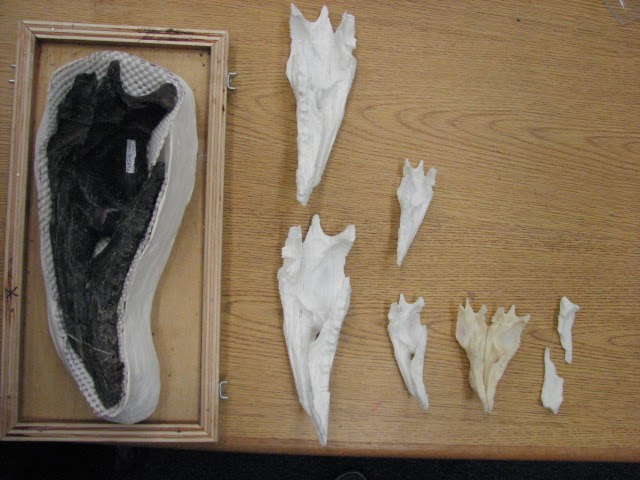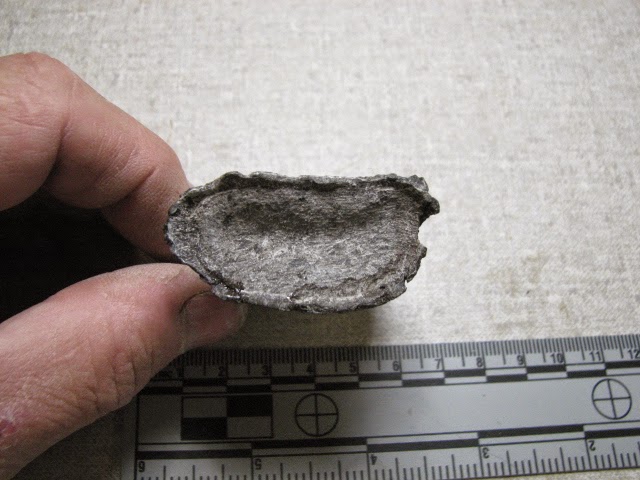We continue to work on extracting bones from the main block, and getting the identifiable skull bones ready to go to the University of Alaska for proper scientific study. It will be sad to see the skull go away, probably never to return to OMSI. The skull is going to be classified (a formal scientific process) and then it will become the original type specimen for a new species (if not family or genus) of animals. At that point it will be scientifically very valuable. It will go back to the University of Oregon and will be kept in special "Holotype" storage. However, since we have scanned it, we will be able to keep 3d printed copies of it - and more!
3D models of scanned objects can be modified in any way conceivable, and I have been playing around with the scanned parts of Bernie's skull to re-create a full skull with missing parts. I've been using Rhino software to do it, which is available for a 90 day evaluation period free of charge. It's really good software but I don't think I can justify purchasing a real copy when my 90 day period is up. So I'll just have to work fast, I guess!
Here's some screen captures of the process I've gone through. I have modeled the back art of the skull, currently missing, as an Ichthyosaur skull without temporal fenestras. It is easier that way, and seems to fit the back end projections better. In some ways the resultant skull resembles a cross between Ichthyosaurs and large Amphibians such as Temnospondyls. This may not be real, but until we get more loose bones we don't know for sure what it looked like. If it has temporal fenestras like other Thalattosaurs, the skull and mandible would be even longer than in this recreation.
So here's the process in pictures: Here is four views of the original half-skull scan.
Here it is from the right side
Now since the skull was broken in half we can create a mirror-image copy. The nose needed to be twisted to remove some distortion so the two halves fit together nicely. Rear view:
And a top view:
Now we add in another potential part - the tip of the left mandible.
So now we add a mandible of a reasonable size and dimensions, and the missing part of the skull. I have not attempted to delineate the multiple bones that these parts would be made from. Nor could I easily make them blend in evenly and smoothly to the existing bones. Something about the way the software treats the imported scans differently from the created objects makes this hard to do.
Now the new parts are copied in a mirror-image and placed under the jaw line.
Here are so spheres of about the right size to be eyes, placed in the orbits.
Now I modify the spheres to incorporate some pupils. It's beginning to look really good!
Here it is from the front. I think this animal had limited binocular vision with much better vision to the sides. My daughter Gloria says this is typical of birds-of-prey such as eagles and hawks, where the eyes can work both independently and together.
Here's some fun - open the mouth! Looks like a Japanese monster!
Imagine this coming after you!
Last of all, add some teeth. These are roughly copied from one of the existing teeth as to dimensions. They were placed on the upper jaw where the roots of broken-off teeth exist, duplicating positions. The teeth in the lower jaw were placed in-between those of the top jaw. You could argue the angle the teeth make in respect to the jaw bones, but straight vertical works for me.
And here we have a re-created head of the animal!!!
Sincerely, Greg Carr


















































